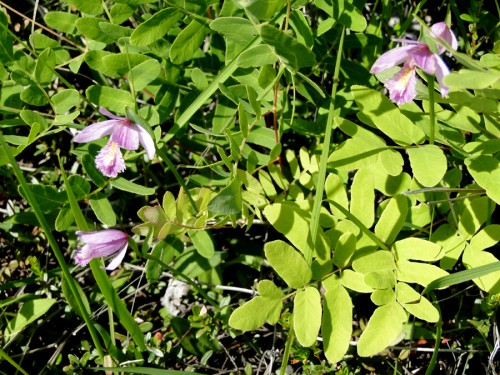
This past Spring (May and June 2012) a group in south central Connecticut transplanted many blocks of peat soil, about 20″ X 20″, with very rare Adder’s Tongue Fern (Ophioglossum pusillum). This is an attempt to salvage the population from an area that is to become an active cranberry bog again, after many years of lying fallow except for mowing. The soil and vegetation blocks also contained the rest of the ecological community: royal fern, assorted sedges, rushes, and wildflowers, countless microorganisms, invertebrates, and – not to be forgotten – a seed bank. Watering and monitoring continues.
The destination area was closer to the road, also former cranberry bog, but still fallow. When choosing a location to place a block, great care was taken to replicate hydrology and aspect, though peat depth could not be replicated; the organic horizon was substantially deeper in the source area. It took over 100 man-hours of back-breaking labor by Carol Lemmon, a Board Member of the Connecticut Botanical Society, and half a dozen others (mostly volunteers) to move the population from the future cranberry cultivation area.
Maintaining the former cranberry bog as a wet meadow, rather than letting it revert to a red maple forest, requires regular mowing. Meadow, as a wildlife habitat, is in much shorter supply in Connecticut than forest. Phragmites australis control was also needed. This invasive would have completely overrun the entire diverse botanical community without expensive eradication. Fortunately with multiple rare and uncommon species, including several species of gorgeous pink orchids, funds have been found for the aspects of rescue, maintenance, and restoration that need paid skilled workers. The biodiversty and beauty of the unusual peatland wet meadow motivate volunteers to donate most of the man and woman power for execution of the rescue operation, as well as restoration and ongoing maintenance.
The Connecticut Threatened Adder’s Tongue has a simple, ovate leaf with a pointed tip, entire leaf edges (no teeth,) and is only abut two inches long. Its flower is a plain green spike, rather like a plantain flower. Adder’s Tongue looks for all the world like a Canada Mayflower leaf with a plantain flower. The photos below include a transplanted block with a few such leaves. For a clearer image, just google the scientific name. Blooming Pitcher Plant and some Rose Pogonia orchids are also shown.
I apologize for not including the location of this worthy project, quite likely to succeed, but it is CTDEEP policy not to divulge locations of rare species, for their future safety.

